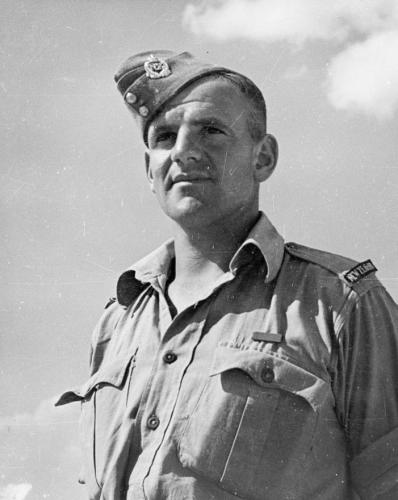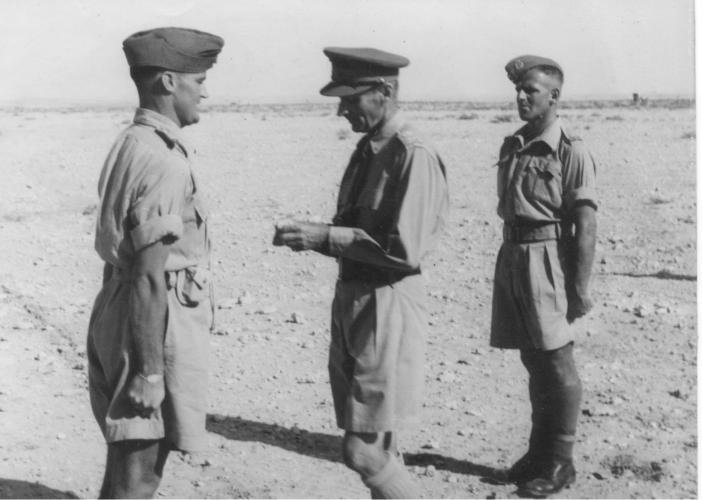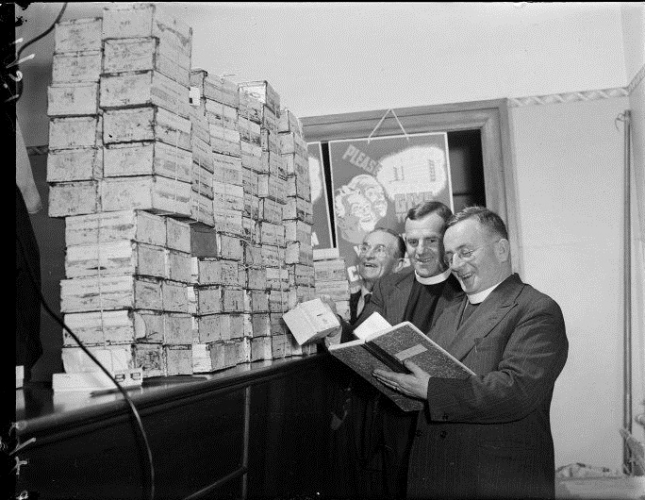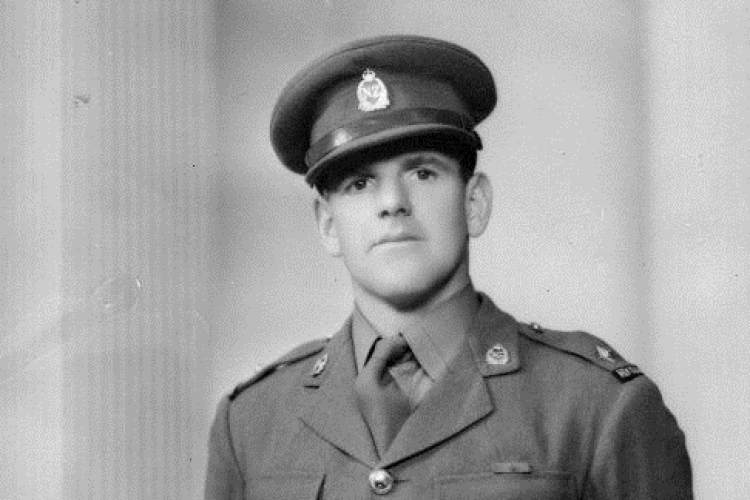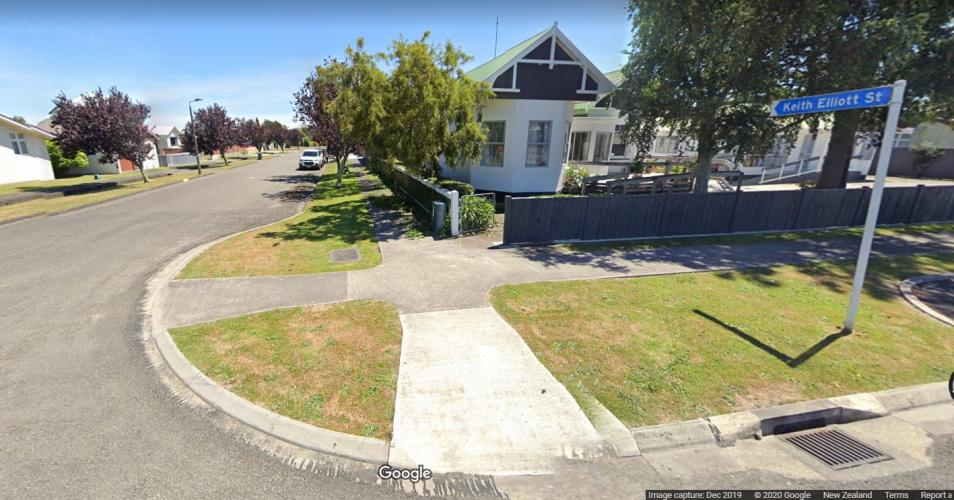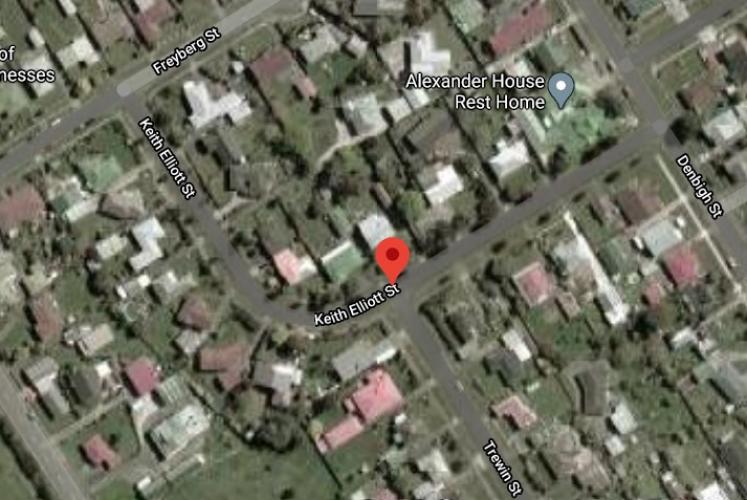Keith Elliot c 1942
Reason for the name
This street is named in honour of Keith Elliott, VC. 2Lt Elliott was a New Zealand soldier who served with the New Zealand Military Forces during the Second World War. He was awarded the Victoria Cross, the highest award for gallantry in the face of the enemy that can be awarded to British and Commonwealth forces, for his actions in the First Battle of El Alamein.
Keith Elliott was born (auspiciously) on 25 April 1916 in the backblocks settlement of Apiti, north-east of Feilding, the eighth of nine children of Thomas Frank Capper Elliott, a farmer, and his wife, Ethel Marie Knyvett. His first years were spent in Apiti; then the family lived in Feilding and on a succession of poor farms in the vicinity. Practical, keen on sport, but not academic, Keith was sent to Feilding Agricultural High School, where the headmaster, L. J. Wild, made a deep impression on him. Commencing farm work in 1933, in 1935 he became manager of a 96-acre family farm at Marima, near Pahiatua.
Author: Evan Greensides and The Poppy Places Trust
Four rough years, scraping out a living on the farm, were brought to an abrupt end with the outbreak of the Second World War. Elliott immediately enlisted in the Second New Zealand Expeditionary Force. He left New Zealand on 1 May 1940 with the 2nd Echelon as a private in the 22nd Battalion. After serving in England, he went with the battalion to the Middle East and took part in the fighting in Greece and Crete. Zest for life and a certain reckless jollity helped Elliott and his mates to survive in difficult conditions. Following the evacuation from Crete, he fought in the North African campaign. Now a sergeant, he was part of a group captured at Bardia (Al Bardi) on 27 November 1941, but was liberated early in January 1942. He then went with the division to Syria, where he was hospitalised with malaria.
On 15 July 1942, back in North Africa, his battalion was attacked by German tanks at Ruweisat. Elliott led his platoon to the cover of a ridge, where it re-formed. Under heavy fire, he then led seven men in a bayonet charge across open ground, seizing four machine-gun posts and an anti-tank gun. Coming under fire from another gun post, he charged and captured it on his own. Although badly wounded, he led his men to friendly lines and handed over 130 prisoners. For displaying ‘great personal courage and leadership’ during the action he was awarded the Victoria Cross.
Elliott was commissioned second lieutenant in May 1943. He was sent home in July that year and was discharged in December. Welcomed with great acclaim in the Pahiatua district, he remained modest and unassuming – a good Kiwi bloke. He resumed farming and on 2 February 1944, in Hastings, married Margaret Rachel Markham, whom he had met before the war. The couple began married life on a rehabilitation farm; they would have five children.
Elliott was an honest mix of toughness, hard drinking and earnest praying, but he now made a remarkable transition, becoming an Anglican clergyman. He was encouraged to enter the ministry by Michael Underhill, a former army chaplain, who assured him it was the best way to help his community. Elliott commenced training at College House, Christchurch, in February 1946; he was ordained deacon in 1947 and priest in 1948. His first curacy was at All Saints’, Palmerston North, where he once stunned the congregation during a sermon by wheeling his bicycle into the church to illustrate his need for a car.
After serving as the first chaplain of the military training conscripts, he was sent in 1950 to assist Harry Squires at the Wellington City Mission. In 1952 he was appointed vicar of the isolated parochial district of Pongaroa, south-east of Pahiatua, where he was responsible for the building of a new church at Makuri. He became vicar of Pohangina (including Ashhurst and Bunnythorpe) in 1956. His idiosyncratic style of ministry included blunt remarks, pre-emptory decisions, and very practical aid – such as milking the cows of sick parishioners. His approach to fund-raising was also practical: using a trailer, he collected rags, dags and beer bottles from around the parish.
Elliott never grew accustomed to consultative decision-making and on the spur of the moment during one synod volunteered to join the Maori mission. In 1959 he was placed in the Wainui-a-rua pastorate, based at Raetihi, and in 1963 he was sent to the sprawling pastorate of Aotea–Kurahaupo, based in Putiki, Wanganui. Good nature and bluntness won him Maori friends despite his ignorance of the language.
In May 1966 Elliott returned to Wellington as assistant City Missioner under Walter Arnold, a well-known pacifist. Although he made a significant contribution, he was eventually transferred out of the mission because of differences with the authorities over administering benefits. In 1973 he was appointed vicar of Makara and Karori West, and in 1977 he walked the length of New Zealand to raise money for a new church at Karori. He and his wife retired to Raumati in April 1981.
In 1967 Elliott wrote his autobiography, "From cowshed to dog collar", with the help of Rona Adshead. For some 40 years after the war he spent most of his birthdays away from home, speaking at Anzac Day services. He died of cancer on 7 October 1989 at the Te Omanga Hospice, Lower Hutt, survived by his wife and children. His down-to-earth honesty, modesty and no-nonsense faith impressed all who knew him.


